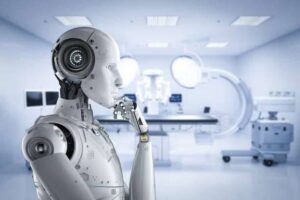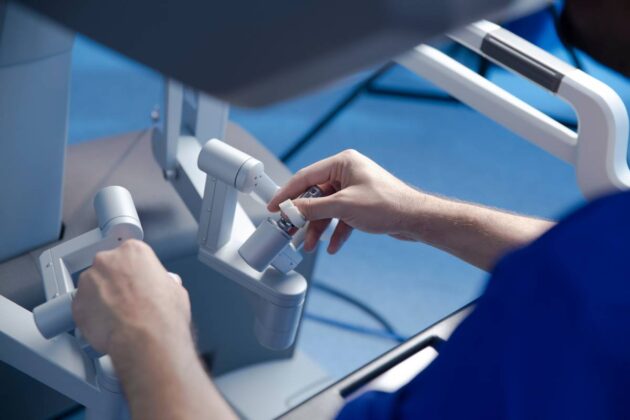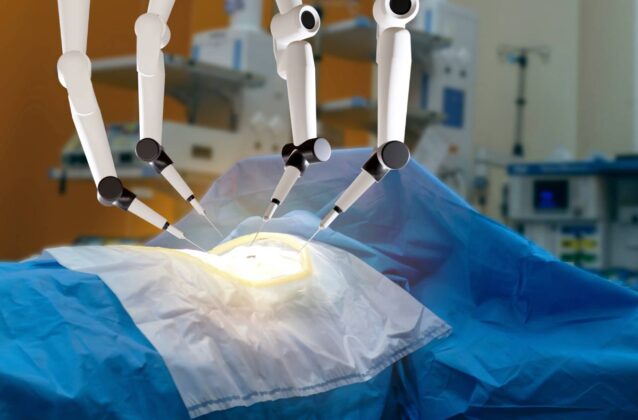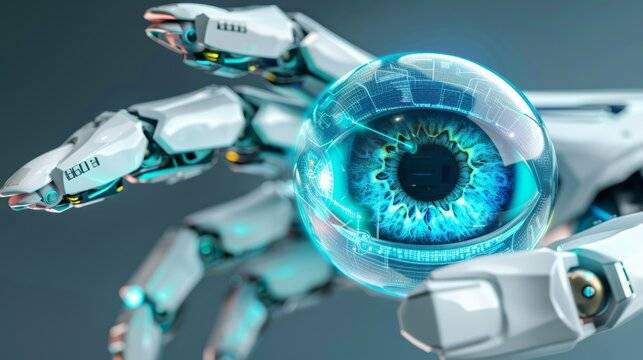Cataracts are one of the most common causes of vision impairment, gradually clouding the lens of the eye and leading to blurred vision, glare, and difficulty seeing at night. If left untreated, cataracts can seriously affect your vision.
Fortunately, advancements in cataract treatment have made it safer and more effective than ever before. One of the most revolutionary developments in recent years is robotic cataract surgery.
In this blog, we’ll explore the advantages and disadvantages of robotic cataract surgery to help you understand how it could benefit you in restoring your vision and improving your quality of life. Let’s dive in!
Contents
What Is Robotic Cataract Surgery?
 Robotic cataract surgery is an advanced technique that uses a robotic system to assist surgeons in removing cataracts and placing intraocular lenses (IOLs) with high precision. Unlike traditional cataract surgery, which involves manual incisions and tools, robotic surgery uses laser-based technology to perform smaller, more accurate cuts.
Robotic cataract surgery is an advanced technique that uses a robotic system to assist surgeons in removing cataracts and placing intraocular lenses (IOLs) with high precision. Unlike traditional cataract surgery, which involves manual incisions and tools, robotic surgery uses laser-based technology to perform smaller, more accurate cuts.
Here’s what makes it different from traditional surgery:
Precision: The robot performs highly accurate movements, ensuring the lens placement and cataract removal are done with greater accuracy.
Minimally Invasive: The incisions made during robotic surgery are smaller, leading to faster healing and less post-surgery discomfort.
AI Assistance: The system uses AI technology to map the eye and customize the procedure to each patient’s needs, making the treatment more personalized.
While the technology offers significant advantages, it also comes with disadvantages, such as a higher cost and limited availability. Let’s dive into the pros and cons in the next section!
Advantages of Robotic Cataract Surgery

Robotic cataract surgery is becoming increasingly popular due to its numerous benefits over traditional cataract surgery. Here are some of the key advantages:
High Precision and Accuracy: The robotic system allows for extremely precise movements, ensuring accurate lens placement and cataract removal. This high level of accuracy helps improve post-surgery outcomes, providing patients with clearer and sharper vision.
Minimally Invasive Procedure: Since robotic surgery uses laser-based tools, the incisions made are much smaller compared to traditional methods. This means less tissue damage, which results in faster healing and reduced discomfort after the surgery.
Faster Recovery and Less Pain: With the precision of robotic tools, the recovery time is significantly shorter, and there’s less swelling and redness post-surgery. Most patients can return to normal activities within 24 hours, experiencing minimal pain compared to traditional surgery.
Enhanced Visual Outcomes: Robotic cataract surgery is especially effective for placing multifocal lenses and other premium IOLs, resulting in improved vision clarity and reduced dependence on glasses after the procedure.
Customized Treatment Plan: The AI-assisted robotic system creates a personalized treatment plan based on your eye’s unique parameters. It adjusts the lens placement, cut size, and energy levels to ensure the best possible results.
These advantages make robotic cataract surgery a game-changer for patients looking for more precise, comfortable, and effective cataract treatment. However, as with any medical procedure, there are also some downsides to consider. Let’s take a look at the disadvantages next!
Disadvantages of Robotic Cataract Surgery

While robotic cataract surgery offers several benefits, there are also some notable disadvantages that you should be aware of:
High Cost: One of the biggest drawbacks of robotic cataract surgery is the cost. The advanced technology, robotic systems, and specialized equipment make this procedure significantly more expensive than traditional cataract surgery. This may not be financially feasible for everyone.
Limited Availability: Not all hospitals or clinics offer robotic cataract surgery. These systems are still relatively rare and usually only available at specialized centers. If you live in a rural or remote area, finding a facility that offers this procedure could be a challenge.
Requires Specialized Training for Surgeons: To use the robotic system effectively, surgeons must undergo specialized training. If the surgeon is not well-versed in using the robotic system, the accuracy of the procedure may not be optimal, potentially affecting the outcome.
Technology Dependence: Robotic cataract surgery is highly dependent on technology, and if there is a technical malfunction or machine failure, the surgery may be delayed or require human intervention. This dependence on technology can be a concern for some patients.
While robotic cataract surgery offers remarkable precision and faster recovery, these disadvantages must be considered when deciding whether it’s the right choice for your cataract treatment. It’s essential to consult with your doctor to weigh the benefits and risks based on your individual needs.
Is Robotic Cataract Surgery the Best Choice for You?
Robotic cataract surgery is a revolutionary option for those looking for high precision, faster recovery, and improved visual outcomes.
If you’re someone who values cutting-edge technology and a quick recovery, robotic cataract surgery could be the ideal solution for you. But, if cost and accessibility are concerns, traditional cataract surgery is still a safe and effective option.
Whatever your decision may be, it’s crucial to consult with a qualified specialist to understand your best options based on your specific needs. If you’re experiencing cataract-related issues, Cataract Surgery at EyeMantra can help!
Book your free consultation now at +91 9711116605 and take the first step towards clearer vision!



